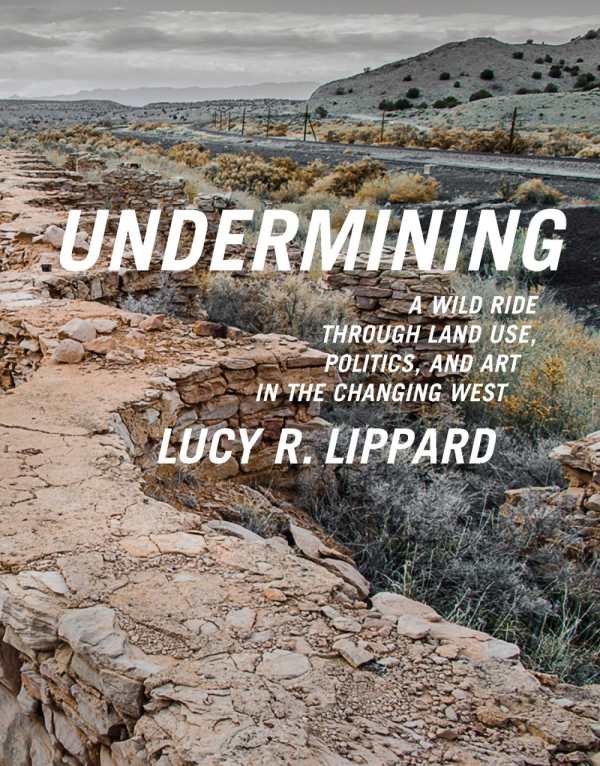Undermining
A Wild Ride through Land Use, Politics, and Art in the Changing West
A visual narrative of photographs accompanies an inquisitive written narrative to show the link between rural and urban landscapes.
Who has the right to decide how land in the Southwest is used? Homeowners or developers, Native Americans or farmers, politicians or industrial conglomerates? And how do artists enter the conversation? These questions are at the heart of Lucy Lippard’s book-long essay, Undermining: A Wild Ride through Land Use, Politics, and Art in the Changing West.
The book begins with a discussion of gravel pits, which Lippard claims are “a metaphor for the underground level of a 21st-century cultural landscape.” Gravel pits are dug into the earth to create the building materials for the vertical skyscrapers found in cities. These materials provide a link between rural and urban communities. From gravel, the book moves on to discuss issues that are less metaphorical and more recognizable—mining, indigenous rights, water use, fracking, and global warming—all within the frame of how culture and landscape intersect.
More than two hundred color photographs of art works, landscapes, and architecture form a continuous band across the top of each page, with a running footnote along the bottom identifying the photo and the artist. The photos relate to but don’t illustrate the text; instead, they serve as a visual narrative of their own, parallel paths of a similar story.
It is the discussion of the massive land-art projects from the 1960s and 70s, such as Robert Smithson’s Spiral Jetty or James Turrell’s Roden Crater, that clarifies Lippard’s use of cultural geography. Although land art is site specific—and often awe inducing—it bypasses local geography, history, and populations. Younger artists integrate land-use activism with their art. Lippard claims her favorite art today is aboriginal earthworks: rock art, earth mounds, and ruins of ancient adobe towns.
Lippard is an author, a curator, and an activist, as well as an early champion of conceptual and feminist art. She has been awarded a Guggenheim fellowship and two grants from the National Endowment for the Arts. She makes her home in the small village of Galisteo, New Mexico, just west of a gravel mine.
As Lippard admits, Undermining is a quirky book, something of a rant. It’s long on questions, short on answers, and, at times, the text detours energetically. Still, gems are found on every page. The questions—framed within the intersection of art, nature, and society—serve as guideposts as we look for ways to create a sustainable future.
Reviewed by
Karen Ackland
Disclosure: This article is not an endorsement, but a review. The publisher of this book provided free copies of the book to have their book reviewed by a professional reviewer. No fee was paid by the publisher for this review. Foreword Reviews only recommends books that we love. Foreword Magazine, Inc. is disclosing this in accordance with the Federal Trade Commission’s 16 CFR, Part 255.

